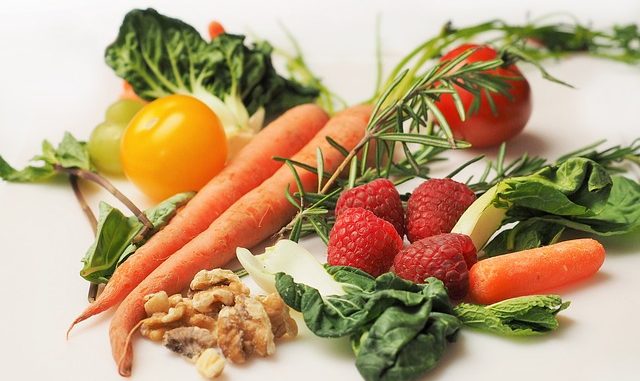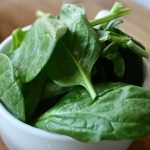
The acronym RDA means Recommended Dietary Allowance. In some cases the ‘A’ has come to meet ‘Amount’ however it means to all intents and purposes the same thing.
The RDA value is a definition of a defined amount of a nutrient on a daily basis. The intention was to establish a nutritional level for planning and assessing dietary intake. It covers the intake of all essential nutrients (mainly vitamins and minerals) which meet the needs of a healthy balanced diet so that people can lead healthy lives.
To define a balanced diet means quantifying many of the nutrients for consumption. It is a single value in most cases but there are sex differences and in some instances the amounts defined will depend on age. It is one of those measures that defines where possible the amount of vitamins, minerals and supplements.
History Of The RDA
The RDA was first developed in the early 1940s by the United States government as a means to understand what essential nutrition was needed to keep a growing population and one which at that time was also at war. Most countries have adopted a similar system. In recent years the USA and Canada have developed a replacement for the RDA. There is a better and more detailed set of nutrition recommendations which are collectively called the Dietary Reference Intake or DRI. In some cases it is also known as the Recommended Dietary Allowance or Daily Adequate Intake. The Tolerable Upper Intake level (TUI) is a value above which it is not advisable to exceed because of unwanted health issues.
An IU is an International Unit which is often used in pharmacology. Again, it a is a quantification value for biologically active substances.
The Vitamins
The most common RDAs:
Vitamin A (retinol) For men the RDA is 900 micrograms (3,000 IU) and for women, 700 micrograms (2,310 IU). The tolerable upper intake is 3,000 micrograms (10,000 IU). If the levels are regularly exceeded, the side effects are nausea, vomiting, headaches, dizziness, blurred vision, clumsiness, giddiness, birth defects and liver problems.
Vitamin B1 (Thiamin). For men, the RDA is 1.2 milligrams and for women, it is 1.1 milligrams. There is no TUI level defined. Whilst it is rare situation, too much vitamin B1 produces dermatitis, and other hypersensitiveity reactions especially in the skin.
Vitamin B2 (Riboflavin). For the men the RDA is 1.3 milligrans, and for women it is 1.1 milligrams. There is no TUI level. Like thiamin the issues of overdosing are rare but it can also cause similar instances of hypersensitivity.
Vitamin B3 (Niacin): The RDA is 16 milligrams for men and 14 milligrams for women. There is a tolerable upper intake level of 35 milligrams. The side effects are hot flushes and nausea.
Pantothenic acid (B5) is limited to and RDA of 5 milligrans for both sexes. Too much in the diet causes diarrhoea and there is no known TUI level.
Pyridoxine, pyridoxamine, pyridoxal (vitamin B6) has an age related RDA associated with it. For men between the ages of 19 and 50, the RDA is 1.3 milligrames and increases to 1.7 milligrams over the age of 51. For women, the RDA is the same for the same age range but only rises to 1.5 milligrans when the age is above 51. There is a Tolerable Upper Intake level of 100 milligrams. An excess is serious: nerve damage with numbness and pain in the limbs which leads to difficulty with walking.
Cyanocobalamin (B12): The RDA for both sexes is 2.4 micrograms and there is no TUI level. Too much in the diet produces oedema, muscle weakness, cramps, pain and neuralgia, along with various unmentionable rashes.
Vitamin C (Ascorbic acid) For men the RDA is 90 milligrams and for women the RDA is 75 milligrams. The TUI is very high but set at 2,000 milligrams. Too much produces nausea, kidney stones and increased or excessive iron absorption.
Vitamin D (calciferol) This vitamin has age ranges associated with it. The level is 5 micrograms (200IU) for all sexes and ages between 19 and 50. From 51 to 70 it is 10 micrograms and for all ages above 71 it is 15 micrograms (600 IU).
The Minerals
Calcium: The RDA for both men and women is 1 gram (1,000 milligrams). The best sources are dairy especially milk and other dairy products. Calcium is needed for strong bones, muscle and teeth formation. It regulates heart beat, helps with muscle fibre functioning and functioning of nerves. It’s also a component in blood clotting.
Chromium: The RDA for men is 35 micrograms amd 25 micrograms for women. It is found in corn oil, some molluscs such as clams, whole-grain cereals and brewer’s yeast. It is essential for glucose metabolism which is needed for producing energy. It also improves the function of insulin.
Copper: The RDA for both sexes is 900 micrograms. It is found in oysters, clams, some nuts, various meat organs and offal, and legumes. It is required for the proper functioning of red blood cells, for bone growth and general health. It works with vitamin C to produce the structural protein elastin which keeps skin supple.
Fluorine: Fluorine is present as fluoride and has an RDA of 4 milligrams for men and 3 milligrams for women. It is found in fluorinated drinking water, teas, marine fish. It helps too with bone formation and inhibits and prevents dental caries forming. A useful element which is added to drinking water for this purpose.
Iodine: the RDA is 150 micrograms. Found in iodine treated sea salt and seafood especially seaweeds. One of the reasons for the benefits of the Okinawan diet. It is a key component of thyroxine (T3 and T4) which is a controlling hormone of metabolism.
Iron: The requirement in men is lower than in women which is against the usual trend. The RDA for men is 8 milligrams and for women is 18 milligrams because of losses in the menstrual cycle. It is found in meat, offal such as liver and legumes. It is also leached from iron cooking ware. Iron is needed for hemoglobin formation and for the transport of oxygen in the blood. It improves blood quality and increases resistance to disease and stress. It also forms an important cofactor in some enzymes that use iron-sulphur clusters.
Magnesium: the RDA is 420 mg (men) and 320 milligrams (women). Usually found in green plants as a cofactor in chlorophyll, in nuts and whole grains. It is is important for acid and alkaline balance, for the metabolism of carbohydrates and fat production.
Manganese: The RDA for men is 2.3 mg and for women, 1.8 mg. It is found in nuts, whole grains, tree saps such as birch, vegetables and fruits. The element is useful in some enzymes that produce superoxide anions for destroying bacteria and other microorganisms as well as having a general healing function. It is needed for fat and carbohydrate production. It is also needed for sex hormone manufacture and general skeletal development.
Molybdenum: The RDA is 45 micrograms. It is found in grains and legumes and nuts. It functions as a cofactor for a few enzymes but these have a multifunctional use.
Phosphorous: The RDA is 700 milligrams in both sexes. It is found in fish, meat, poultry, eggs and grain. It is essential for bone development, for protein, fat and carbohydrate metabolism as well as production (synthesis).
Potassium: The RDA is 4.7 grams in both sexes. It is found in lean meat, vegetables and fruits. It is needed along with sodium for electrolyte balance especially in the blood and lymph fluids which is often overlooked. It controls the activity of heart muscle, the nervous system and the kidneys.
Selenium: the RDA is 55 micrograms. Found in seafood, organ meats, offal, lean meat and grains. It protects the body tissues from oxidative damage especially from sun radiation, forms of pollution and normal metabolic processing.
Sodium is certainly an element for which there is a need but in most cases it is one that is recommended to always cut back on. The American Heart Association recommends no more than 2,300 milligrams per day with an ideal limit of no more than 1,500 milligrams per day and for all adults
Zinc: The RDA is 11 milligrams in men and 8 milligrams in women. Found in liver, lean meats, eggs, seafood and whole grains. It is required for digestion and metabolism, for preserving immunity, for development especially of the reproductive system and helps with healing.



Leave a Reply